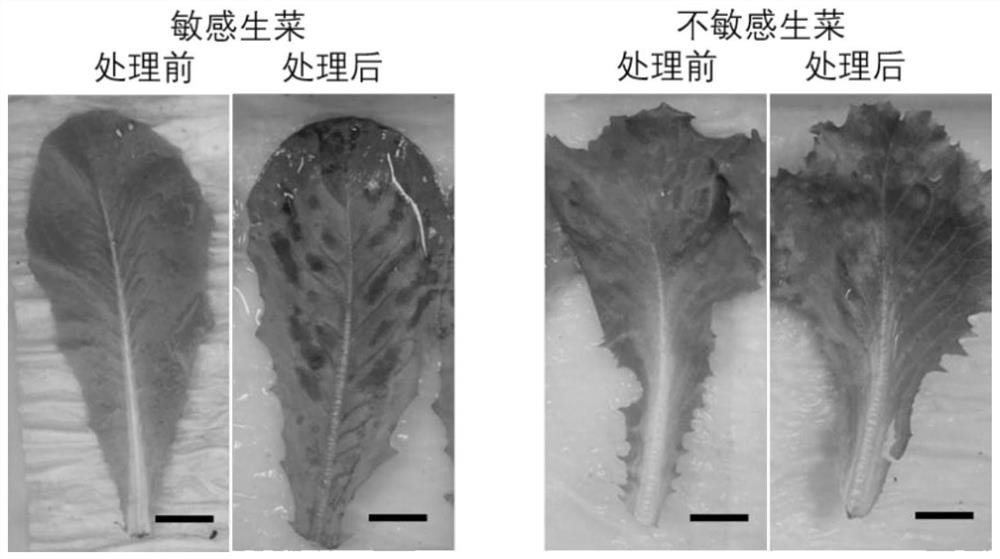Separated lettuce Tr gene and application thereof in controlling allergic reaction of lettuce to triazinam
A technology of allergic reaction and azithromycin, applied in the field of plant engineering, can solve the problem of unreported molecular mechanism of type
- Summary
- Abstract
- Description
- Claims
- Application Information
AI Technical Summary
Problems solved by technology
Method used
Image
Examples
Embodiment 1
[0026] Acquisition of the gene Tr controlling lettuce hypersensitivity to azinamide:
[0027] 1. Genetic analysis of lettuce hypersensitivity to azinamine
[0028] In order to analyze the genetic law of the genes controlling the allergic reaction of lettuce to azinamide, the present invention adopts romaine lettuce (Romaine, PI344074) sensitive to azinamide and head lettuce (Crisphead, PI536839) insensitive to azinamide as parents ( figure 1 ), to obtain F by crossing 1 , further selfing to obtain F 2 generation groups (Yu et al. 2020). to F 2 On behalf of the individual, the phenamine solution was processed and the phenotype after 24 hours was evaluated, recorded and statistically analyzed. F in 179 individuals 2 The number of individuals with a sensitive phenotype in the population is 134, and the number of individuals with an insensitive phenotype is 45. Sensitive individuals: insensitive individuals = 134:45≈3:1(χ 2 =0.01282 (0.05,1)=3.84, P>0.05). It was shown tha...
Embodiment 2
[0032] Application of the gene Tr controlling the allergic reaction of lettuce to azinamide in lettuce:
[0033](1) Using sensitive romaine lettuce (Romaine, PI344074) DNA as a template, using primers: AGHP544F: GATATATTTCTCAAGATCAGAAGTACTAATTAAAGGGTTTGGAATTGAAA and AGHP544F: TTGAACGATCGGGGAAATTCGAGCTCTTACACATAAGACATGACAA, the amplified target fragment contains the sequence shown in SEQ ID NO. It was inserted into the pRI101 plant expression vector (the vector was linearized with SacI / ScaI) and transformed into insensitive lettuce (tr / tr) under Agrobacterium-mediated (Curtis et al. 1994). Transgenic detection primers were used: AGHP538F: CTTCTGTAAAAGGATCATGCC; AGHP538R: CTTGACATCTTCTTCACTTG to detect transgenic plants, and a total of 4 transgenic plants were obtained, and each strain showed a phenotype sensitive to azinamide ( image 3 Middle (a) the second from the left shows the phenotype of one of the transgenic plants Tr-COM#1 sensitive to azinamide). T for one of the tra...
PUM
 Login to View More
Login to View More Abstract
Description
Claims
Application Information
 Login to View More
Login to View More - R&D
- Intellectual Property
- Life Sciences
- Materials
- Tech Scout
- Unparalleled Data Quality
- Higher Quality Content
- 60% Fewer Hallucinations
Browse by: Latest US Patents, China's latest patents, Technical Efficacy Thesaurus, Application Domain, Technology Topic, Popular Technical Reports.
© 2025 PatSnap. All rights reserved.Legal|Privacy policy|Modern Slavery Act Transparency Statement|Sitemap|About US| Contact US: help@patsnap.com



